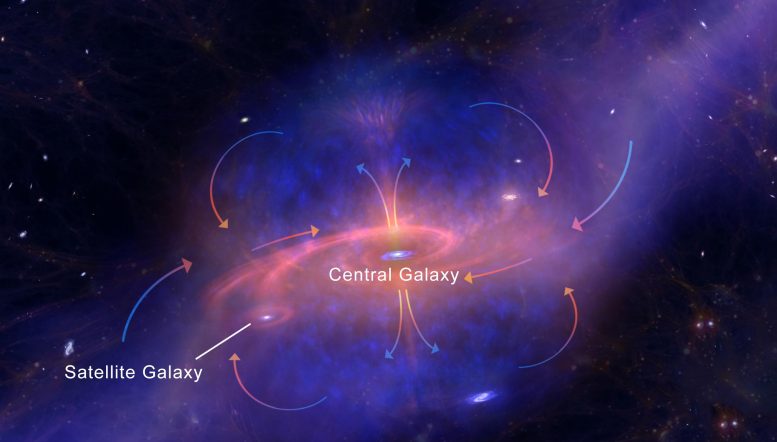
Researchers have found evidence of enriched gas recycling during galaxy formation in the early Universe by observing a massive galaxy at redshift 2.3 using the Keck II and Subaru telescopes. The gas surrounding the galaxy contains elements heavier than helium, which are believed to be the result of stellar processes such as supernovae. Kinematic modeling of the observations shows that streams of this enriched gas spiral into the galaxy, providing additional fuel for rapid star formation. Credit: Department of Astronomy, Tsinghua University
Scientists have observed a massive galaxy at redshift 2.3, discovering that streams of enriched gas, containing elements heavier than helium, spiral into the galaxy, providing additional fuel for rapid star formation. This supports the theory of enriched gas recycling during galaxy formation in the early Universe.
Streams of intergalactic gas, enriched with elements heavier than helium, encircle and spiral into a massive galaxy observed at redshift 2.3, researchers report. The findings provide evidence of enriched gas recycling during galaxy formation in the early Universe.
Galaxies form through the accretion of gas from the circumgalactic medium (CGM) and intergalactic medium (IGM), which subsequently condenses into stars. Simulations and observations have shown that cold stream accretion – the accumulation of pristine intergalactic gas that contains almost no elements heavier than helium – provides fuel for the star formation rate of galaxies in the early Universe.
However, stellar processes in these early galaxies, such as supernovae, enrich gas within the galaxy with elements heavier than helium, including carbon. Related processes can even eject some of this material back out into the IGM.
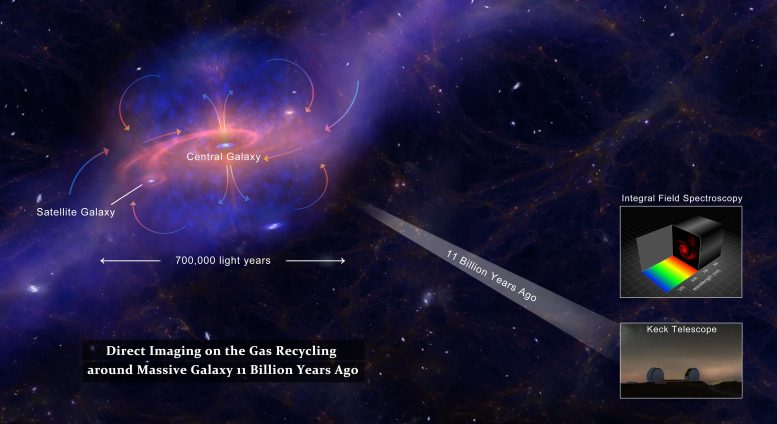
Direct imaging on the gas recycling around massive galaxy 11 billion years ago. Credit: Department of Astronomy, Tsinghua University
Theory predicts that the enriched gas could subsequently be recycled, accreting back into galaxies, providing additional fuel to sustain rapid star formation for longer. However, observations of enriched gas feeding high-redshift galaxies are limited.
Shiwu Zhang, Zheng Cai, and colleagues use the Keck II and Subaru telescopes to observe gas surrounding a massive galaxy at redshift 2.3. In addition to helium and hydrogen, spectra of this region reveal emission lines of ionized carbon, indicating that the CGM gas surrounding the galaxy has been enriched in elements heavier than helium. Kinematic modeling of the observations suggests that streams of the enriched gas are spiraling toward the massive galaxy.
Based on the findings, Zhang, Cai et al. propose that the observed inflowing enriched gas was recycled from an earlier period of star formation and calculate that it could sustain the observed star formation rate of the galaxy.
Reference: “Inspiraling streams of enriched gas observed around a massive galaxy 11 billion years ago” by Shiwu Zhang, Zheng Cai, Dandan Xu, Rhythm Shimakawa, Fabrizio Arrigoni Battaia, Jason Xavier Prochaska, Renyue Cen, Zheng Zheng, Yunjing Wu, Qiong Li, Liming Dou, Jianfeng Wu, Ann Zabludoff, Xiaohui Fan, Yanli Ai, Emmet Gabriel Golden-Marx, Miao Li, Youjun Lu, Xiangcheng Ma, Sen Wang, Ran Wang and Feng Yuan, 4 May 2023, Science.
DOI: 10.1126/science.abj9192

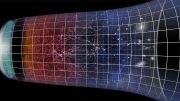
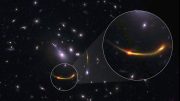
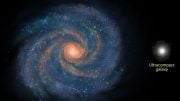
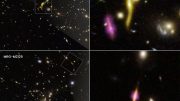
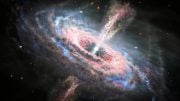

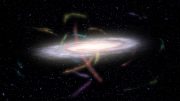
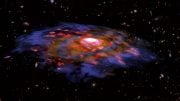
Be the first to comment on "Intergalactic Upcycling: Recycled Gas Feeds a Massive Galaxy in the Early Universe"